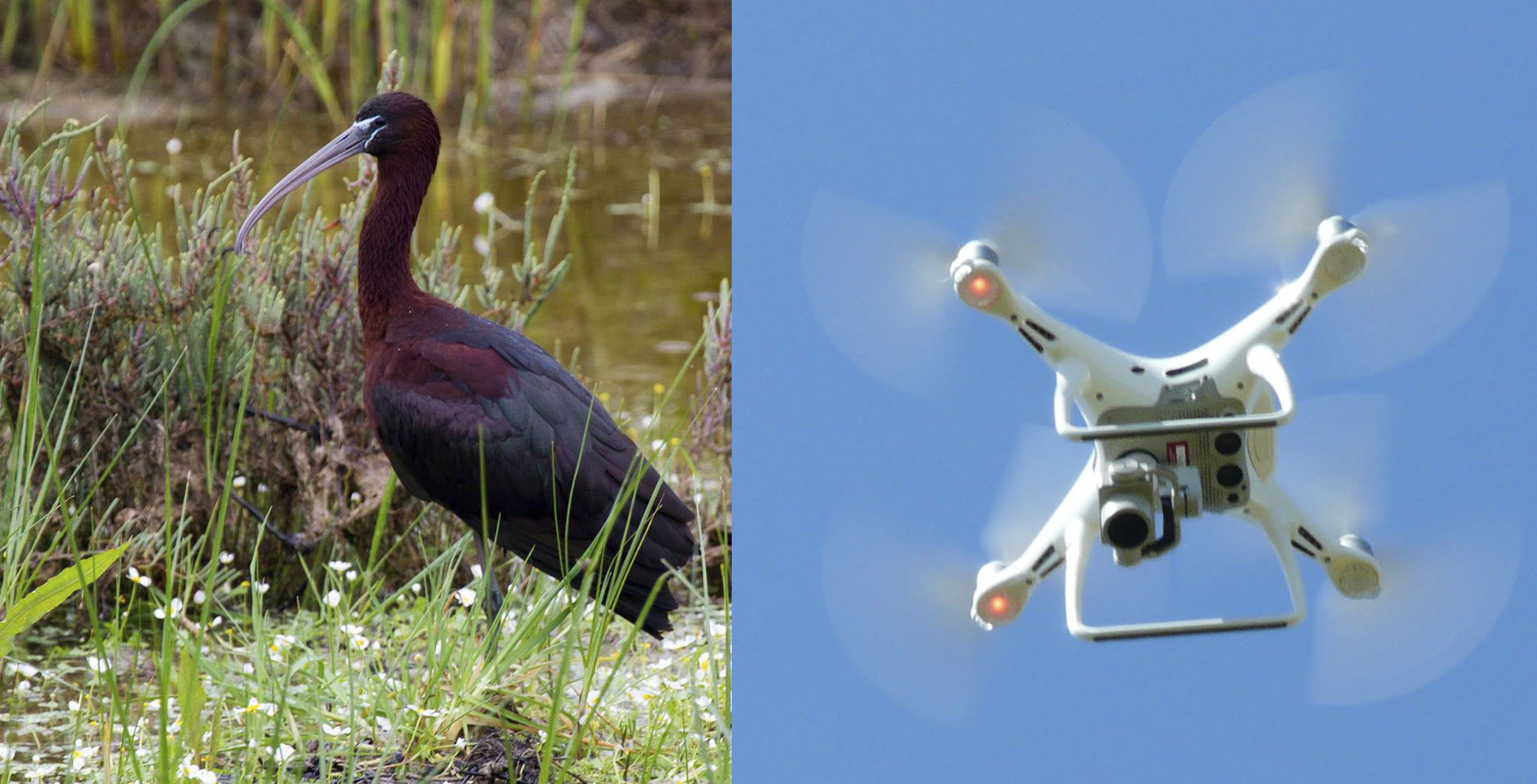Waterbird communities are potential indicators of ecological changes in threatened wetland ecosystems and consequently, a potential object of ecological monitoring programs. Waterbirds often breed in largely inaccessible colonies in flooded habitats, so unmanned aerial vehicle (UAV) surveys provide a robust method for estimating their breeding population size. Counts of breeding pairs might be carried out by manual and automated detection routines. In this study the main breeding colony of Glossy ibis (Plegadis falcinellus) at the Doñana National Park was surveyed. A high resolution image was obtained, in which the number and location of nests were determined manually through visual interpretation by an expert. A standardized methodology for nest counts that would be repeatable across time for long-term monitoring censuses is proposed, through a supervised classification based primarily on the spectral properties of the image and a subsequent automatic size and form based count. Although manual and automatic count were largely similar in the total number of nests, accuracy between both methodologies was only 46.37%, with higher variability in shallow areas free of emergent vegetation than in areas dominated by tall macrophytes. The potential challenges for automatic counts in highly complex images are discussed. informacion[at]ebd.csic.es: Afán et al (2018) Drone Monitoring of BreedingWaterbird Populations: The Case of the Glossy Ibis. Drones 2:42 Doi 10.3390/drones2040042









 Las altas temperaturas están provocando que las lagunas y las marismas de Doñana pierdan agua rápidamente
Las altas temperaturas están provocando que las lagunas y las marismas de Doñana pierdan agua rápidamente



